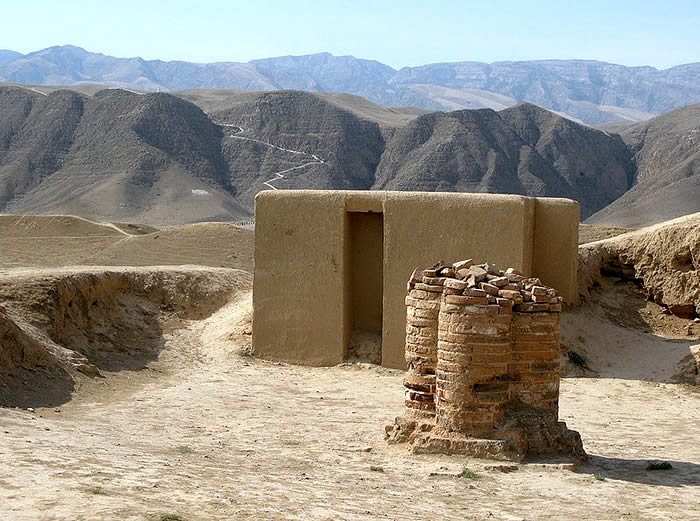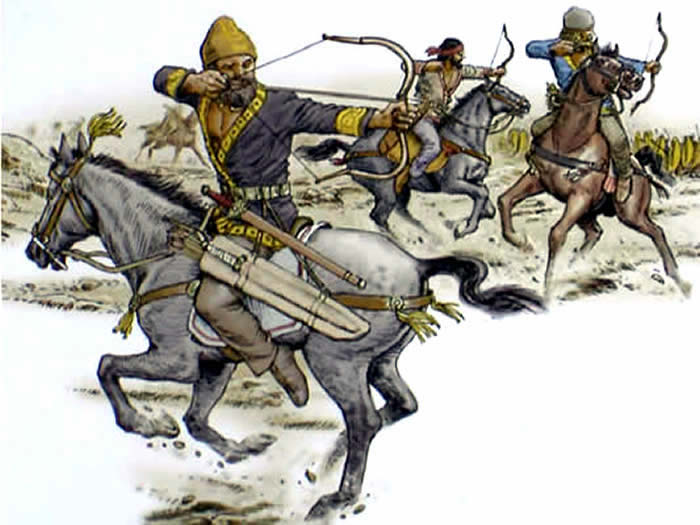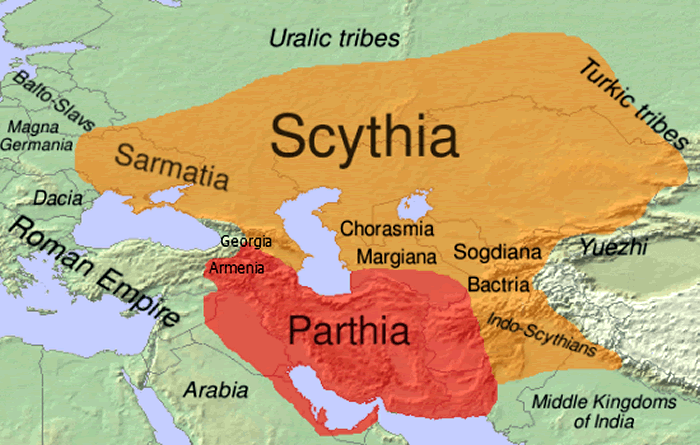 Parthian Empire
Parthian Empire

(Text by Duane R. Hurst © 2013)
Click on a link to view its information and pictures.
|
PARTHIA LINKS: Significant Event: Battle of Carrhae in 53 BC Cataphract (Heavy Cavalry) Parthian Shot Main Cities: Ctesiphon; Nisa; Susa Time: 247 BC - 224 AD Language: Arsacid Pahlavi; Aramaic; Old Persian Personage: Arsaces I; Phraates II Religion: Parthian Gods Related Country: Iran; Turkmenistan |
|
|
Brief History: I have included only a few items concerning the history of this empire. A good source for more details can be found on Wikipedia or in history books. EARLY EMPIRE: In 247 BC, leader of the Parni tribe, Arsaces I, seceded from the Seleucid Empire and formed the Parthian Empire. An important revenue generator was the Silk Road, which ran through its northern region. An early ally was the Greco-Bactrian kingdom. EMPIRE EXPANSION: Expansion beyond the Gates of Alexander started under Phraates I. Mithridate I expanded territory by conquering Media and Mesopotamia. His forces also reached the Indus River. In the 1st century BC, Parthia allied with the Indo-Parthian Kingdom. Parthia's eastern border was stabilized between 30 and 375 AD, during existence of the Kushan Empire. This left Parthia free to combat Roman expansion. The two empires fought numerous wars and Rome suffered one of its worst defeats at Carrhae in 53 BC. Parthian Crown Prince, Pacorus I, raided as far west as Antioch. In 20 BC, Phraates IV signed a peace treaty with Augustus Caesar, who gave an Italian slave girl as a gift. The girl later became Musa, Queen of Parthia. She eventually was forced into exile after marrying her son. EMPIRE DECLINE: Another Parthian-Roman war (58-63 AD) broke out after Vologeses I invaded the Roman client kingdom of Armenia. Roman emperor Trajan seized Mesopotamia in 116 AD. However, he withdrew the following year after Babylon revolted. A planned return in 118 AD failed upon Trajan's death in 117 AD. During another Parthian-Roman war (161-166 AD), Roman forces razed Ctesiphon and captured Seleucia. It was a hollow victory, as Roman troops contracted a deadly disease (probably smallpox) that later ravaged Roman domains. Wars with Rome weakened Parthia, which was followed by the Sassanid Empire. |
|
|
© Page Publisher: Duane R. Hurst
|


